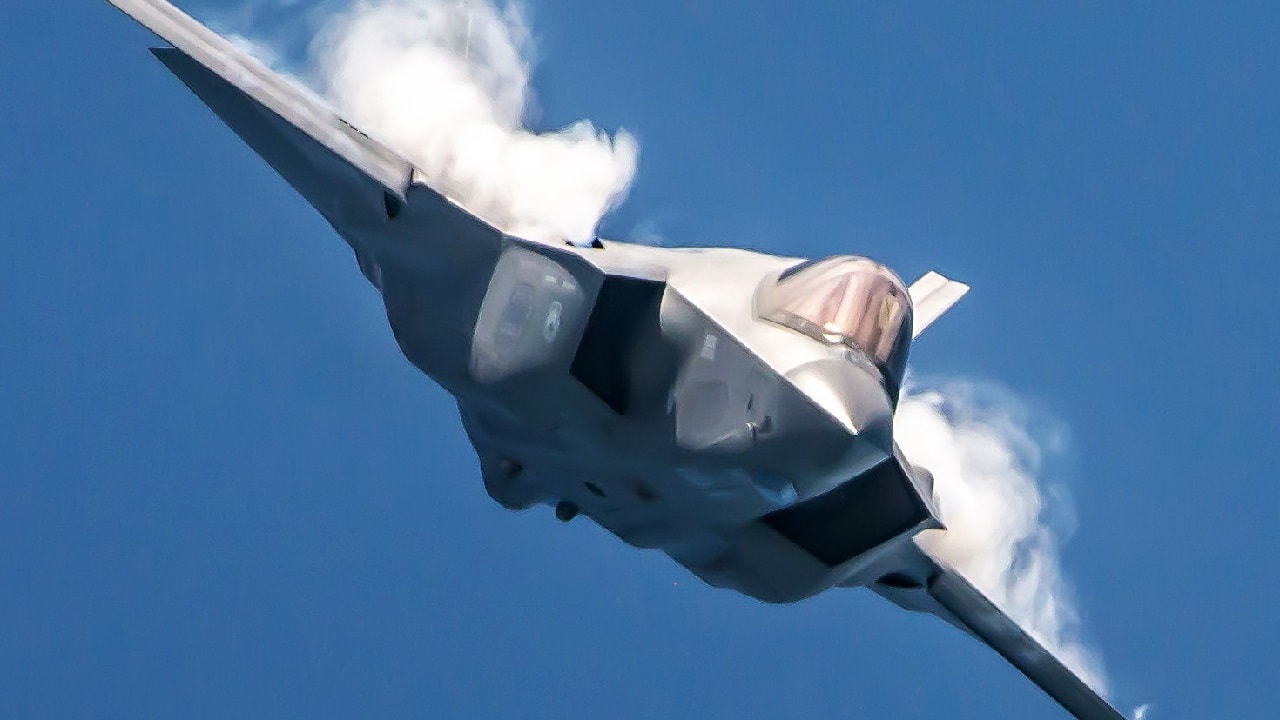Guest Op-Ed by Major Gen John Barry, USAF (ret) on the F-35 – Many things change over the years in terms of military strategy.
But one critical constant is the need to dominate the airspace.
The tactical advantages that come with maintaining operational control over this crucial part of the battlespace often serve as the determining factor in the outcome of many modern military conflicts.
Today, the F-35 Joint Strike Fighter (JSF) constitutes a key part of how America and its allies project air superiority.
The most technically advanced aircraft ever flown, the F-35’s stealth, sensor fusion, networking capabilities, air superiority features, and electronic warfare systems contribute to its effectiveness in establishing and maintaining airspace control and enhance the overall capabilities of our military forces.
As with many major military procurement programs, the F-35 has not been without controversy. Failures by planners at the Pentagon to properly spec the initial requirements of the F-35 engine mean that the engine that powers the aircraft is now running twice as hot as was originally designed. This has driven up maintenance costs on a project that has already been famously and consistently over-budget. Meanwhile, planned air vehicle growth on the F-35 means that the operational capabilities of the current engine powering the fighter jet will be exceeded by the end of the decade.
A consensus has emerged that the propulsion systems powering the F-35 must be upgraded, but a divide has emerged as to the best way to do so. After years of Beltway drama and positioning over whether to upgrade the existing F135 engine or replace it entirely with a project dubbed the Adaptive Engine Transition Program (AETP), the U.S. Air Force (USAF) landed on the question in March. Its 2024 budget request ultimately foregoes the AETP engine replacement and instead pursues an Engine Core Upgrade (ECU) package for the Pratt & Whitney F135. This was, in my judgement, the correct decision.
For starters, the AETP was going to be enormously expensive. Despite common misconceptions that the defense budget is infinite, spending upwards of $6 billion on a new engine would have drawn resources away from other critical projects. Needed investments in a 6th generation fighter, the Next Generation Air Dominance Platform (NGAP), could have fallen by the wayside, and the Air Force could have also been cornered into an unwanted trade-off that required the service to forego roughly 70 F-35 jets in exchange for the new engine. It does not make tactical sense to lose the capabilities of an entire Wing when a perfectly adequate upgrade of the existing engine is available.
Furthermore, the proposed AETP engine design would not have worked on the Navy and Marine Corps variants of the F-35. It was also highly unlikely that any of our allies who partnered in the Joint Strike Fighter program would have adopted this new powerplant. As a result, only U.S. Air Force F-35s would have sported the new engine and it would have had to shoulder the program cost in its entirety. Not only that, but the Air Force would have been forced to establish and maintain an entirely new supply chain to support this second engine. This would have been unwise at a time when the military, like the rest of the economy, is experiencing ongoing supply chain issues.
Air Force leadership took all of this into consideration in deciding not only to scrap the AETP, but to move forward with the ECU. The engine modernization retrofit will improve both thrust and range by more than 10%, offer a 50% improvement in thermal management, provide the F-35B STOVL version a 5% boost in vertical lift, and deliver all this in a relatively cost-effective manner that will not disrupt existing supply chains or ground a large number of aircraft for an extended period of time.
Detractors of the ECU option fail to recognize two things: first is that the money already spent on the AETP will not go to waste. Under an initiative known as Next Generation Adaptive Propulsion (NGAP), engine makers will have an opportunity in the coming years to incorporate technologies developed under the AETP program into the 6th Generation fighter. Funding saved by opting for the ECU can be directed toward this effort.
Second, is that combat jet engine upgrades are not uncommon. The Navy’s F/A-18 Super Hornet which can be used as an internal competitor against the F-35, for instance, has undergone several engine upgrades in its storied lifetime to little controversy. There is no reason why a similar approach should not be taken today with the F-35.
Congress Needs to Listen on F-35 Engine
The decision now ultimately lies within Capitol Hill. Congress should follow the lead of the Air Force and heed the advice of our warfighters on how to proceed with the F-35 engine upgrade. Our finest aerial weapons system needs to be outfitted to effectively deal with the threats it is designed to eliminate, in the most cost-effective manner to conserve the defense budget. It’s assigned mission is too important to do anything less.
John L. Barry, Maj Gen, USAF (Ret) is the President/CEO of Wings Over the Rockies. He served in the United States Air Force for over 30 years as a combat fighter pilot, “Top Gun” Fighter Weapons School graduate, Military Assistant to the Secretary of Defense, and as squadron, group and wing commander. He served his last tour on active duty as Board Member and Executive Director for the Space Shuttle Columbia Accident Investigation.

